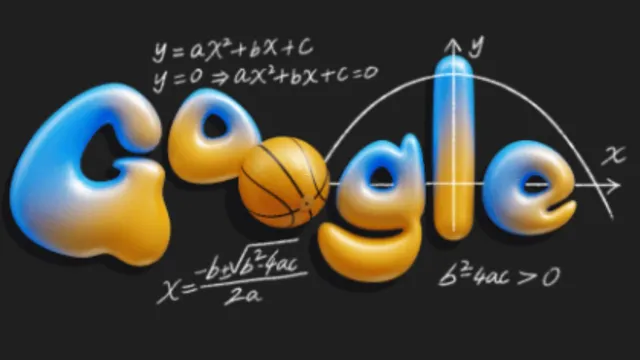- By Shailvee Tiwari
- Wed, 12 Nov 2025 10:35 AM (IST)
- Source:JND
Today's Google Doodle: If you opened Google today, you might have noticed a fun and colourful animation on the homepage. Yes, that’s because Google has dedicated its latest Doodle to the 'quadratic equation,' one of the most famous formulas in mathematics that every student learns about at some point.
Why Google Is Celebrating The Quadratic Equation?
On Wednesday, November 12, Google decided to draw attention to this special formula that has impacted modern science and technology. From the building of bridges and the design of machinery to the solution of difficult economic problems, the quadratic equation has quietly fuelled many discoveries.
This isn’t the first time Google has shown its love for math. The Doodle, titled 'Learning the Quadratic Equation,' was first launched on 8 September in the US and UK, and is now being rolled out across Europe and other parts of the world.
Recommended For You
What Happens When You Click On The Doodle?
Visit the interactive Doodle to learn more about quadratic equations, including their history, real-world uses, and how they work and are solved. It is used by Google to remind people that maths can be fun.
What Exactly Is Quadratic Equation?
A quadratic equation is a mathematical formula in which the highest power of the variable (usually x) is two. Its standard form is: ax² + bx + c = 0
Here, a, b, and c are numbers, and the rule is that a cannot be zero. The equation helps you find the value(s) of x that make the statement true. These values are called roots of the equation.
The formula to find these roots is: x = (-b ± √(b² - 4ac)) / 2a
Understanding The Roots:
Depending on the numbers used, this equation can have two, one, or no real solutions.
If D (b² – 4ac) > 0, the roots are real and different.
If D = 0, the roots are real and equal.
If D < 0, the roots are imaginary and unequal.
Mathematicians also express the relationship between roots as:
Sum of roots (α + β) = -b/a
Product of roots (αβ) = c/a
The equation can also be rewritten using its roots as:
x² – (α + β)x + (αβ) = 0
When two equations have the same pair of roots, their coefficients follow this rule:
a₁/a₂ = b₁/b₂ = c₁/c₂
The quadratic equation can also appear in vertex form:
(x + b/2a)² – D/4a² = 0
Here, if a > 0, the value is minimum, and if a < 0, it’s maximum at x = -b/2a.
Even in cubic equations (ax³ + bx² + cx + d = 0), similar patterns appear between the coefficients and roots, which makes this concept a cornerstone of algebra.
ALSO READ: TTE Shares Easy Train Booking Trick To Help Senior Citizens Get Lower Berths: ‘Agar 4 Log Hai Toh…’
Why The Timing Feels Just Right?
The fact that quadratic equations are being taught in many schools around the world as part of their curricula, especially in October and November, aligns with Google's homage. It provides students with a fun reminder that maths is about more than just formulas and numbers; it's also about creativity, patterns, and curiosity.
Thus, the next time you come across the equation ax² + bx + c = 0, remember that it is not just a problem in the classroom. This formula changed the way we saw the world.





